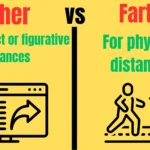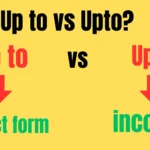Last updated on October 21st, 2024 at 03:40 pm
Language is full of nuances, and few terms illustrate this better than “afterward” and “afterwards.” These words, while seemingly similar, have subtle differences in usage that can cause confusion.
In this comprehensive guide, we’ll explore the distinctions between “afterward” and “afterwards,” their origins, and practical tips for using them correctly in different contexts.
Clearing Up the Confusion
Have you ever found yourself unsure whether to use “afterward” or “afterwards” in your writing? You’re not alone.
Despite their similarity, these two terms are used differently depending on the regional dialect and context. Understanding these differences will help you choose the right word and enhance your writing clarity.
Defining Afterward and Afterwards
Basic Definitions
Afterward and afterwards are both adverbs meaning “at a later time.” Essentially, they serve the same purpose in sentences, indicating that something happens after a specified time or event. For example:
- Afterward: “We went to the museum, and afterward, we had dinner.”
- Afterwards: “We went to the museum, and afterwards, we had dinner.”
Usage Notes
In terms of meaning and usage, “afterward” and “afterwards” are interchangeable. The choice between them often comes down to regional preferences rather than any significant difference in meaning.
The Origins of -ward and -wards Suffixes
Historical Background
The suffixes -ward and -wards have historical roots in English that influence their modern usage.
- -ward: This suffix has Old English origins and was used to form adverbs indicating direction. For instance, “forward” or “backward” reflects this historical usage. Over time, it evolved to denote time as well, leading to the use of “afterward.”
- -wards: Similarly, the -wards suffix was used historically to indicate direction. It eventually became a common variant in forming adverbs, leading to “afterwards.”
Evolution of Language
The evolution of these suffixes is a fascinating aspect of English linguistics. Originally, -wards was more common, but as language evolved, -ward became more prevalent in American English, while -wards remained more common in British English.
Regional Preferences: Afterward vs. Afterwards
American English
In American English, “afterward” is the preferred term. This preference aligns with the general trend in American English to favor the -ward suffix. You’ll find “afterward” used extensively in American publications and media.
Usage Examples:
- “The meeting ended, and afterward, we discussed our plans.”
- “She graduated in June and started her job afterward.”
British English
Conversely, “afterwards” is the favored term in British English. The -wards suffix is more commonly used in British texts and is the norm in various forms of British communication.
Usage Examples:
- “The play was delightful, and afterwards, we went for a walk.”
- “He completed his studies and traveled to Europe afterwards.”
Having trouble with English? We make it simple with easy tips and guides to help you improve.
Start learning and boost your skills Talk Speaker.
Contextual Usage in Different Varieties of English
Understanding how “afterward” and “afterwards” are used in different English-speaking regions can help you write more effectively for your audience.
American Publications
American publications predominantly use “afterward.” For instance, reputable sources like The New York Times and The Washington Post favor this form. Here are a few examples:
- “The event was a success, and afterward, there was a celebration.”
- “She finished her book and afterward, she started a new project.”
British Publications
British publications, such as The Guardian and The Times, typically use “afterwards.” This reflects the standard usage in British English. Examples include:
- “The lecture was informative, and afterwards, the students had a Q&A session.”
- “They attended the conference and went sightseeing afterwards.”
Grammar and Parts of Speech
Both “afterward” and “afterwards” function as adverbs in sentences. They describe actions occurring at a later time relative to another event. Despite their similar roles, it’s useful to be aware of how they might be confused with other parts of speech.
Adverbial Usage
Afterward and afterwards are used as adverbs to indicate that something happens after a particular point in time. For example:
- “We left the party early, and afterward/afterwards, we went home.”
Potential Confusion with Other Parts of Speech
While “afterward” and “afterwards” are straightforward adverbs, confusion may arise with words like “afterword.” Unlike “afterward” and “afterwards,” “afterword” is a noun.
Common Confusion with Homophones: Afterward vs. Afterword
Afterword
An afterword is a concluding section of a book or other literary work, written by the author or another contributor. It often provides additional commentary or reflections on the text.
Usage Example:
- “The afterword in the novel offered insight into the author’s creative process.”
Practical Examples
To avoid mixing up “afterward” with “afterword,” remember that “afterword” refers to a specific section in a book, while “afterward” and “afterwards” refer to a time sequence.
Misunderstandings:
- Incorrect: “The book ended, and we read the afterward.”
- Correct: “The book ended, and we read the afterword.”
Distinguishing Time from Text: Afterward vs. Afterword
Clarifying the Context
Choosing between “afterward” and “afterword” depends on context. Use “afterward” or “afterwards” when referring to time:
- “The ceremony concluded, and afterward, we celebrated.”
Use “afterword” when referring to a textual section in a book:
- “The afterword provided a detailed explanation of the themes.”
Examples and Misunderstandings
- Incorrect: “The meeting concluded, and we discussed the afterward.”
- Correct: “The meeting concluded, and we discussed the plans afterward.”
Tips for Remembering the Difference
Memory Aids
- Afterward (American preference): Think of “ward” as directing something forward in time.
- Afterwards (British preference): Remember the “s” in “afterwards” aligns with British spelling patterns.
Usage Tips
- Afterward: Use when writing in American English or when referring to a time sequence in a general context.
- Afterwards: Use when writing in British English or following the British convention.
Summary: Choosing the Right Term
In summary, “afterward” and “afterwards” are both correct adverbs meaning “at a later time,” with the choice largely dependent on regional preferences. Use “afterward” in American English and “afterwards” in British English.
Avoid confusing these terms with “afterword,” which refers to a section in a book.
By following these guidelines, you’ll be able to choose the appropriate term and use it correctly in various contexts.
This blog post aims to provide clarity on the distinctions between “afterward” and “afterwards” and offer practical advice for using them correctly. If you have any further questions or need additional information, feel free to ask!

Sophie Mitchell, a seasoned English educator, brings her passion for language and years of teaching expertise to TalkSpeaker. With a knack for simplifying grammar and expanding vocabulary, she empowers learners to master English with confidence.




